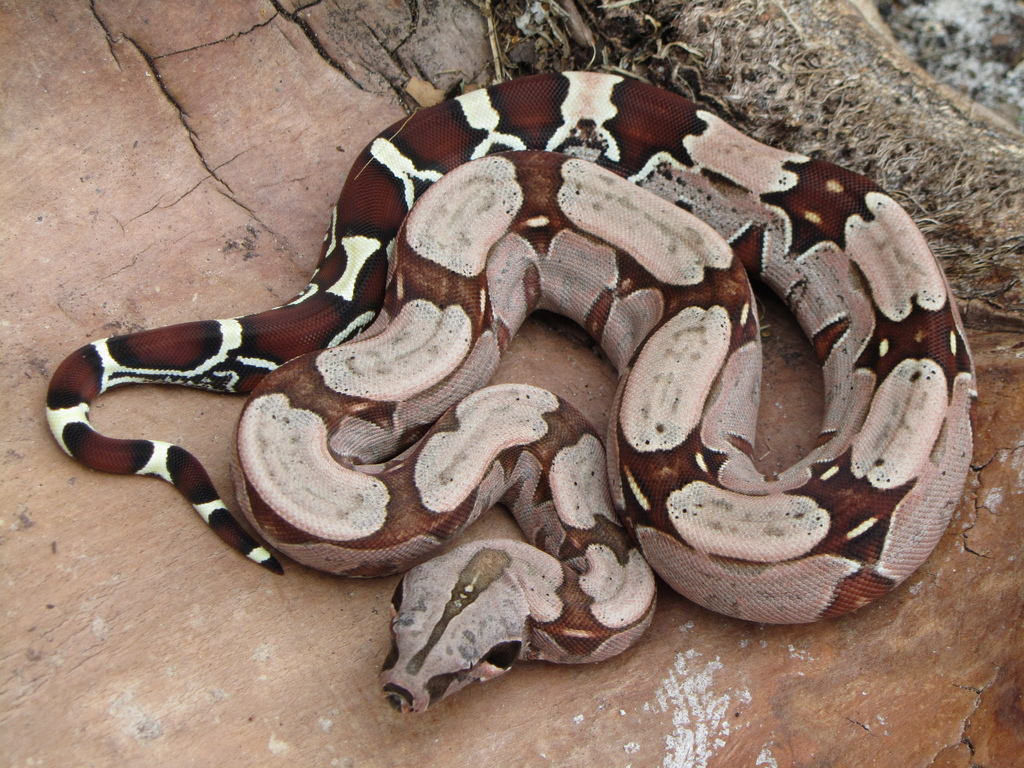

constrictor reaches, and occasionally tops, the averages given above, as it is one of the relatively large subspecies of Boa constrictor. The size and weight of a boa constrictor depends on subspecies, locale, and the availability of suitable prey. Some specimens of this species can reach or possibly exceed 45 kg (100 lb), although this is not usual. Females, the larger sex, more commonly weigh 10 to 15 kg (22 to 33 lb). The boa constrictor is a heavy-bodied snake, and large specimens can weigh up to 27 kg (60 lb). A report of a boa constrictor growing up to 18.5 ft (5.6 m) was later found to be a misidentified green anaconda.
BOA CONSTRICTOR PICTURES SKIN
The largest documented non-stretched dry skin is deposited at Zoologische Staatssammlung München (ZSM 4961/2012) and measures 14.6 ft (4.45 m) without head. Females commonly exceed 10 ft (3.0 m), particularly in captivity, where lengths up to 12 ft (3.7 m) or even 14 ft (4.3 m) can be seen. The usual size of mature female boas is between 7 and 10 ft (2.1 and 3.0 m) whereas males are between 6 and 8 ft (1.8 and 2.4 m). Clear sexual dimorphism is seen in the species, with females generally being larger in both length and girth than males. The boa constrictor is a large snake, although it is only modestly sized in comparison to other large snakes, such as the reticulated python, Burmese python, or the occasionally sympatric green anaconda, and can reach lengths from 3 to 13 ft (0.91 to 3.96 m) depending on the locality and the availability of suitable prey. melanogaster Langhammer, 1983: a nomen dubium. Several other subspecies have been described at different times, but currently, these are no longer considered to be subspecies by many herpetologists and taxonomists. The subspecific name ortonii is in honor of American naturalist James Orton. Illustration of Boa constrictor eques (Eydoux & Souleyet 1842), synonymized into B.
BOA CONSTRICTOR PICTURES FULL
Boa imperator, Boa nebulosa and Boa sigma have been elevated to full species status. Some appear to be based more on location, rather than biological differences. Several subspecies of Boa constrictor have been described, but many of these are poorly differentiated, and further research may redefine many of them. Other common names include chij-chan ( Mayan), jiboia ( Latin American), and macajuel ( Trinidadian). Within the exotic pet trade, it is also known as a "BCC", an abbreviation of its scientific name, to distinguish it from other boa species, such as Boa imperator or "BCI."

Though all boids are constrictors, only this species is properly referred to as a "boa constrictor"-a rare instance of an animal having the same common English name and scientific binomial name.Īll subspecies are referred to as "boa constrictors", and are part of a diverse group of New World boas referred to as "red-tailed" boas, comprising species of both Boa constrictor and Boa imperator. This article focuses on the species Boa constrictor as a whole, and on the nominate subspecies B. Four subspecies are currently recognized. A staple of private collections and public displays, its color pattern is highly variable yet distinctive. The boa constrictor is a member of the family Boidae, found in tropical South America, as well as some islands in the Caribbean. The boa constrictor (scientific name also Boa constrictor), also called the red-tailed boa, is a species of large, non-venomous, heavy-bodied snake that is frequently kept and bred in captivity.


 0 kommentar(er)
0 kommentar(er)
